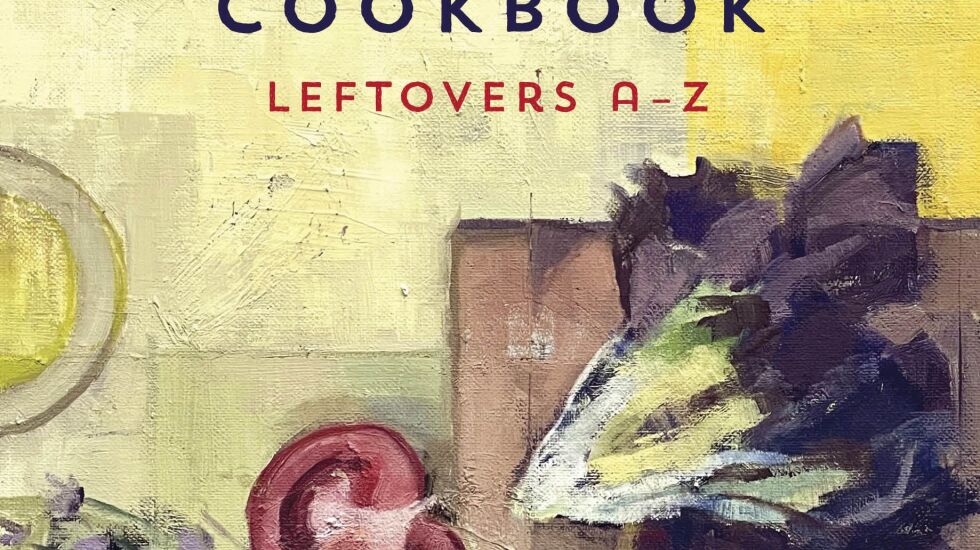
NEW YORK — Not too long ago, Tamar Adler’s husband was tidying up and picked up a tissue that their son had barely used. Adler stopped her husband from throwing it out.
“I was like, ‘No, no, that tissue still has use in it!’ And he was like, ‘I think that is actually the way we would identify a zombie you versus the real you: Just try to throw something out — anything — and if you don’t pounce on it, we know it’s not you,’” she recalled.
Adler gets to show off that strong repurposing ethic in her new 500-page cookbook, “The Everlasting Meal Cookbook: Leftovers A-Z,” a comprehensive guide from Scribner for reusing leftovers, from potato cooking water to day-old sauerkraut.
“It’s not a cheapskate practice. It’s a flavor-imbuing practice and a way of conserving what you have. Use it instead of discarding it,” she said from her home in New York’s Hudson Valley.
Adler turns old Pad Thai into an omelette, makes broccoli stems and wilted leaves into pesto, transforms old meatloaf into pizza, converts stale bread into bread pudding, adds old bacon fat to make cornbread, and even uses peanut shells as kitty litter.
Many things, she insists, taste better the next day, like beans, rice, slow-cooked meat and soups. Other dishes take invention, like when she turns coleslaw into soup and cheesecake into a milkshake.

“What I was hoping was that the sheer bulk of it would sort of secretly infiltrate everybody’s thinking so that things started just to look usable instead of looking like they should be discarded,” she said.
“Slowly it could start to shift and move toward like, ’Oh, maybe I should just not pour this old iced tea down the drain’ — not to save the world but just because it’ll be great as something else tomorrow.”
Adler has always had a bit of the recycler in her; as a teen, she liked shopping at thrift stores. “There was something in me that was always like, ‘We don’t need to always have new versions. The old versions are cool,’” she said.
That tendency followed her as she became a James Beard Award-winning author and food writer with experience cooking in such restaurants as Chez Panisse and Prune. Her books include “An Everlasting Meal” and “Something Old, Something New.”
“As I’ve become a cook and I’ve learned how much better things taste and how much easier it is and how much less expensive it is to let things go on evolving, it’s certainly become more pronounced,” she said.
Adler began work on her new cookbook alphabetically, listing foods from A to Z and then attacking them in order, rather than starting with dishes she had already mastered. “That might have been a really bad idea, but it might have kept me out of ruts,” she said.
She discovered that leftover sausage and veggies added flavor to stews and pasta sauces, and frying an item was another way to give it new life. South Asian or Southeast Asian flavors turned out to be great ways to reinvigorate vegetables — whether cauliflower or cabbage — and tossing in a bit of citrus immediately woke up many leftovers.
“These are culinary practices all over the world and in so many cultures,” she said.
An empty jar of almond butter is put to use making Tamar’s Empty Jar Nut Butter Noodles, which creates a sauce out of the leftover nut butter scraps in the jar.
And beyond food, Adler finds that empty vinegar and dressing bottles are natural vessels to make and store vinaigrettes, too.
Kara Watson, the executive editor at Scribner and Adler’s longtime editor, credits Adler with a leftover dish that keeps getting better: She turns leftover pasta into a pasta frittata the next day, and then puts any leftover frittata the next day onto a piece of toasted bread.
“That is the most delicious version of the meal — three days later, and it’s the most flavorful and texturally interesting. So it’s kind of eye-opening,” Watson said.
“The Everlasting Meal Cookbook” comes at a time when food prices are biting, environmentalism urges us not to throw away reusable things, and the pandemic forced us to become better cooks. Adler emphasizes saving time and boosting taste as well.
“It’s not about virtue, right? You’re not bad for throwing things out or good for saving things. It’s just good for you because it’s delicious, and then you have it and you don’t have to do it again,” she said.
Now that the book is finished, Adler can laugh about the times when her experiments didn’t always work out, like when she tried to turn stale apple cider donuts into savory bread dumplings and a recipe tester wrote a “scathing” review.
Then there was an attempt to salvage under-ripe melon with shrimp that, to her, tasted OK. “My husband tasted it and he was like, ‘This is the kind of thing that’s good for one bite when you’re hungry.’ And I was like, ‘Well, maybe that’s OK.’ And he was like, ‘No, it’s not OK.’”
Looking back on the experience, Adler sees her final recipes as the product of a laborious process but one that elevates what she poetically calls “the leavings of one’s earlier hungers.”
“There were hard ones that were hard ones that I finally conquered. And then there were hard ones that conquered me,” she said, laughing.







